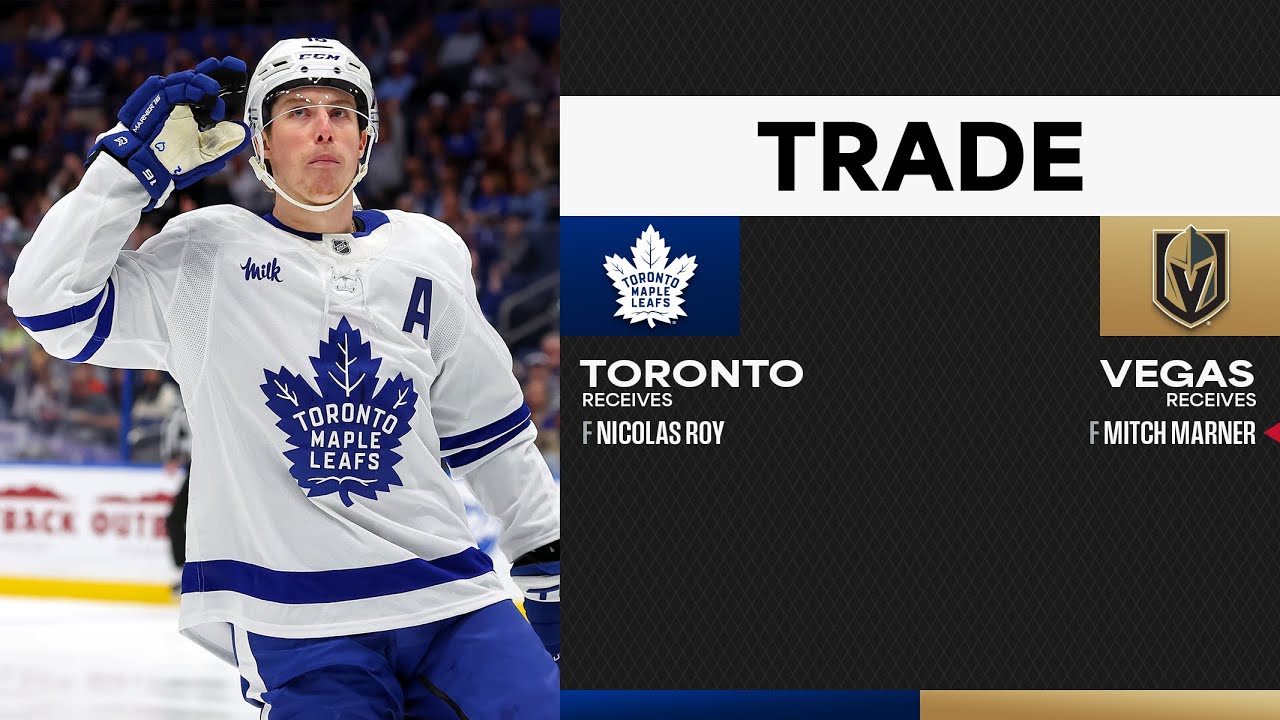Mitch Marner`s tenure with the Toronto Maple Leafs should have concluded with him being immortalized on Legends Row.
Instead, he departs for the Strip, with the return being Nicolas Roy, a useful but ultimately underwhelming third-line forward – the sole asset gained for an exhilarating, yet frustrating player.
Considering the circumstances – just hours before Marner would become an unrestricted free agent and the limitations of an inherited full no-move clause (reportedly used by the player when his trade value was higher) – GM Brad Treliving did well to salvage even this return in the June 30 sign-and-trade that formally signals the end of the Core Four era.
The Vegas Golden Knights managed to keep Marner`s cap hit at a reasonable $12 million, facilitated by an eighth year of contract term they wouldn`t have been able to offer otherwise.
(Interestingly, Marner`s $96 million contract mirrors that of Mikko Rantanen, who was rumored as a potential trade partner. They will share the title of the NHL`s highest-paid winger next season.)
The Golden Knights were barely a concept in Gary Bettman`s mind back in 2015 when Toronto prioritized high-end skill, drafting the London native who would become a star, even selecting him over his future Vegas teammate, Noah Hanifin.
The city welcomed one of its own with open arms, much like receiving a warm embrace from Carlton the Bear.
He was an undersized player blessed with exceptionally slick and deceptive hands, comparable to a magician on Fremont Street. A fluid, creative skater, he viewed the ice rink as a playground, similar to how Nyjah Huston sees a downtown staircase – a canvas for displaying brilliant, unexpected skill.
After an additional season to build confidence and lead the London Knights to a Memorial Cup win, Marner progressed to the NHL. He changed his number from 93 to 16, but few in Leafs Nation doubted he possessed the qualities to become an all-time fan favorite, much like Dougie Gilmour.
Across his nine regular seasons with his hometown team, Marner often dominated, consistently putting together multi-game point streaks, frequently recording three assists even when not the main offensive focus, and sometimes exploding for two goals and two assists when he was feeling particularly dynamic.
He would strip the puck from opponents on the backcheck, then proceed to kill penalties using audacious circle-backs that most coaches would forbid.
We grew accustomed to seeing Marner kick pucks to his own stick or perfectly onto teammates` tapes with such frequency that the extraordinary became commonplace. If necessary, he would even intentionally `header` passes.
Who else could execute a drop pass during a breakaway and make it appear like the optimal play?
Marner`s exceptional vision significantly benefited his initial center, John Tavares (whom then-GM Kyle Dubas reportedly recruited to Toronto using a highlight reel of Marner), helping Tavares achieve a career-best 47-goal, 88-point season.
When he was paired with Auston Matthews, Matthews subsequently erupted, winning three Rocket Richard Trophies and a Hart Trophy. The duo became regular All-Stars, and both were finalists for the Selke Trophy at different times.
Still in his prime at 28, Marner departs the 108-year-old franchise holding fourth place all-time in assists (520) and fifth all-time in points (741). Every player ranked higher than him on these Leafs lists has a banner hanging in the arena rafters and a plaque in the Hockey Hall of Fame. Even the famously pass-first Marner ranks 14th all-time among Leafs goal scorers (221).
“There’s no comparable to him in the league. To be that intelligent and constantly aware of everyone`s position on the ice – while many top players possess this, he`s on a completely different level,” commented Max Pacioretty, a former Golden Knight.
Pacioretty chuckled at the thought of trying to learn from his former Maple Leafs teammate.
“It’s truly difficult to replicate because his anticipation is what`s so incredible,” the veteran explained. “Usually, when players try to anticipate a pass or jump ahead for a breakaway, it’s considered cheating. But with him, it isn`t. That`s because he`s simply exceptional at reading the play and knowing precisely where the puck will be. I genuinely don`t believe you can teach that.”
Imagine explaining to someone unfamiliar with the `Marner Years` in Toronto how the initial hope, immense promise, and incredible highlights ultimately devolved into a situation filled with bitter regret, numerous missed opportunities, and a trade that resulted in merely getting `something` in return.

